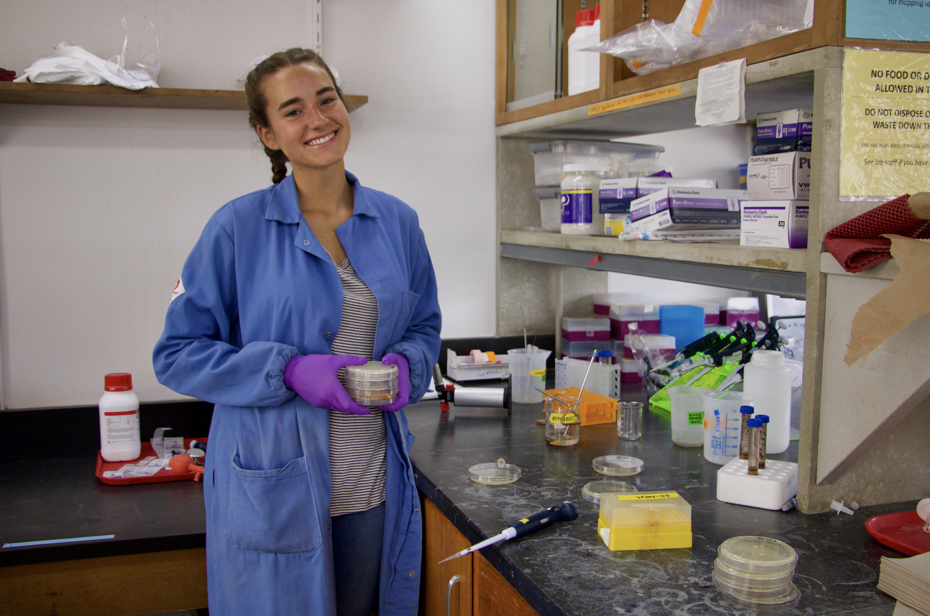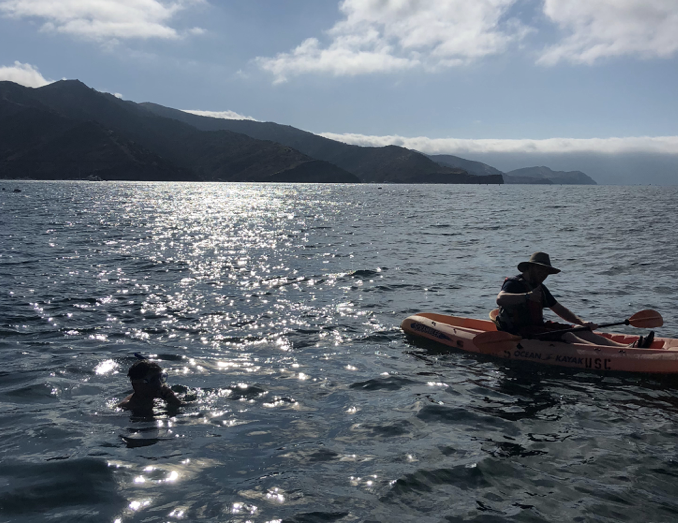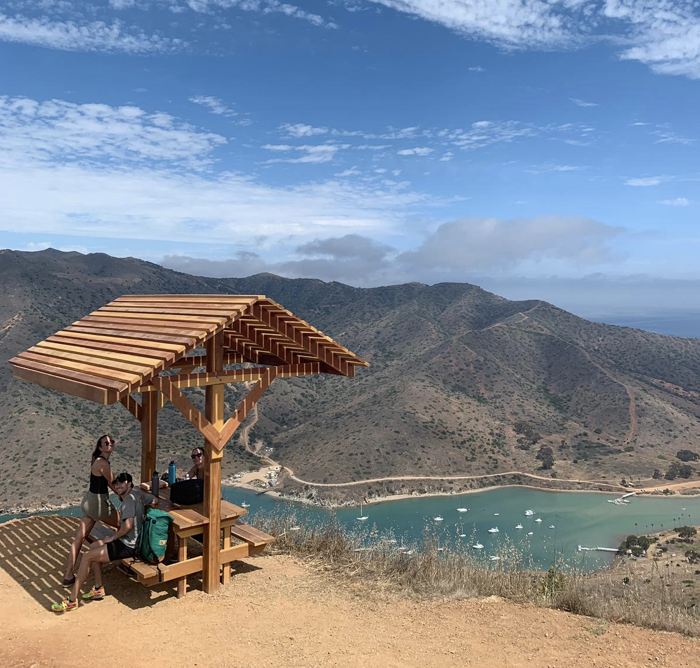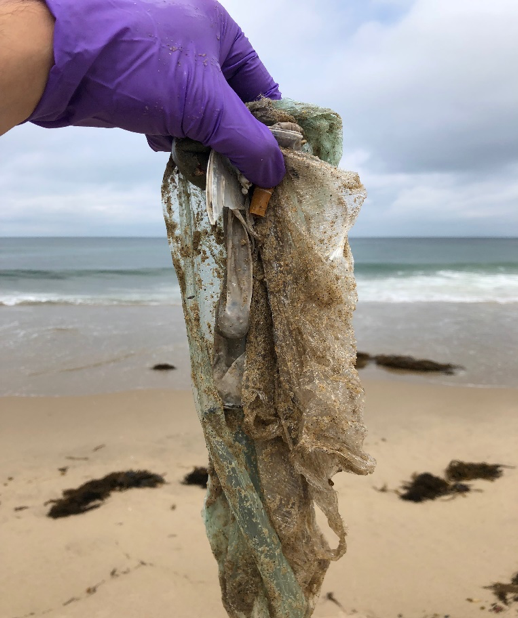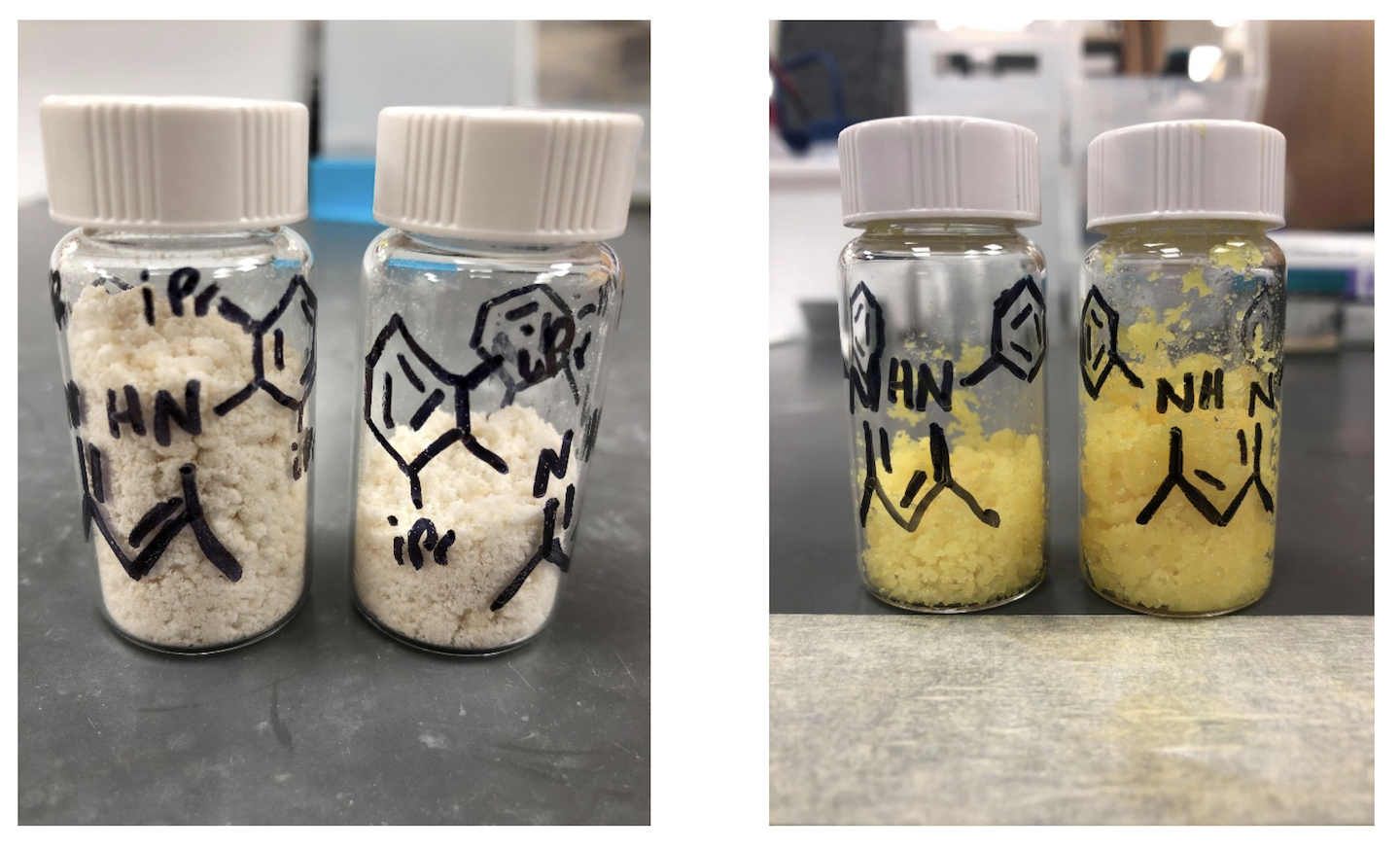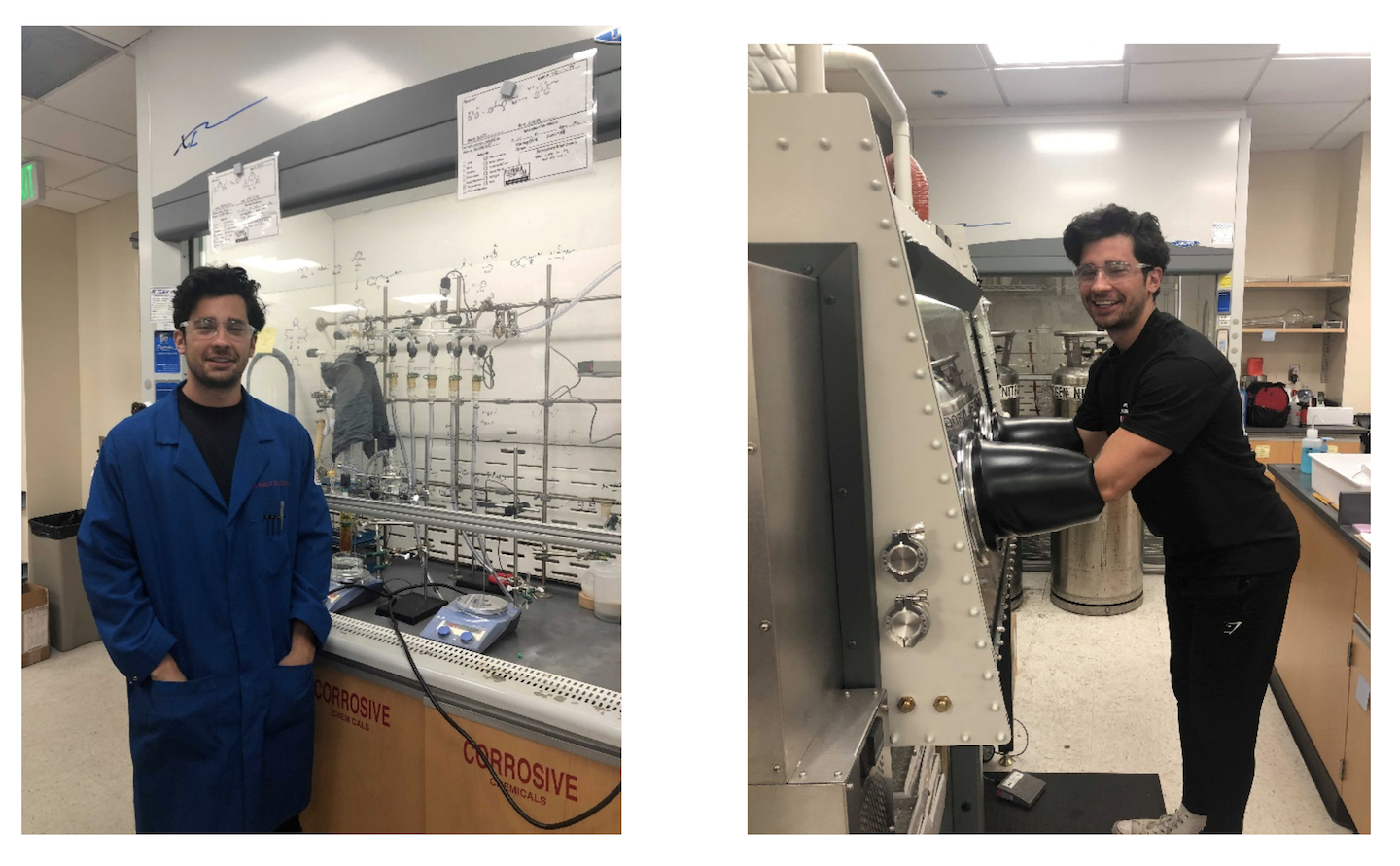By: Isabel Bosch
Hi everyone! My name is Isabel Bosch and I am currently going into my sophomore year at USC. This summer, I had the privilege of working beside Diane Kim and Adriane Jones on the Black Soldier Fly Project for five weeks through USC SURF funding.
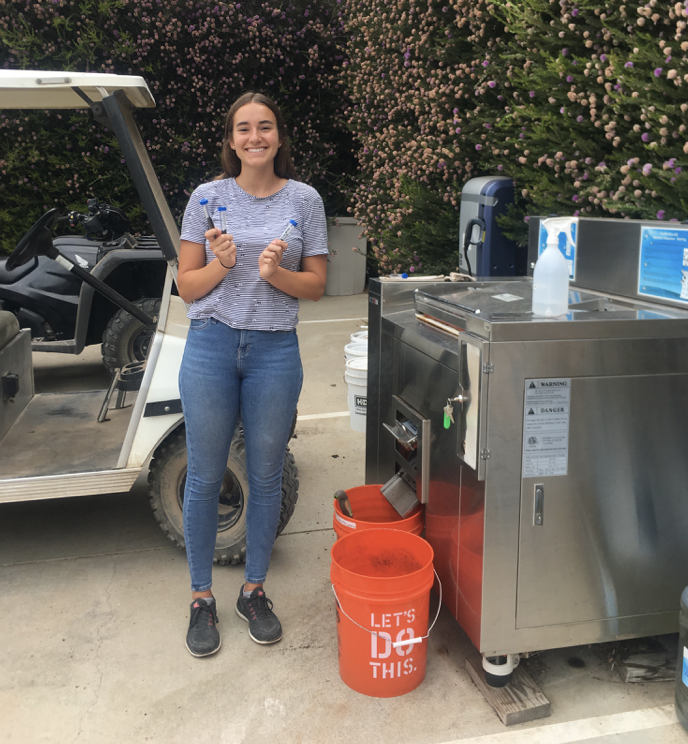
This is me next to the food dehydrator where food waste is dried so that it can be fed to the fly larvae.
This sustainable initiative is amazing because it helps produce zero food waste. The recycling process begins by collecting food waste and running it through a dehydrator to remove all of the liquid. Then, the dried food waste is fed to fly larvae. These larvae can then be used as fertilizer and feed for livestock or fish, resulting in no food waste being brought to landfills.
After being introduced to the ins and outs of the project and visiting the larvae in action at the Fly House, I was ready to start my own independent research. I specifically focused on the transfer rate of bacteria during the recycling process. In order to do this, I worked with two common foodborne bacteria: E. coli and B. subtilis. In separate trials, I inoculated the food waste with the two bacteria and plated them during each stage of the recycling process to ensure that no bacteria was left after the dehydration process – critical so that the food waste is safe to be entered into the food cycle again.
This experience was extremely rewarding because I felt like I was contributing to the solution of a major environmental issue. The Black Soldier Fly project is successful at making the Wrigley Institute produce zero food waste and could potentially be used on Catalina Island and even the mainland to limit the large amount of carbon emissions created by burning food waste in landfills.
My schedule on the island varied day to day. But usually, I worked five days a week until dinner and then on weekends for a couple of hours. This was because I wanted to conduct as many trials as I could in five weeks. In total, I conducted three results, one of which was successful and could be used as data. Even though it was disappointing when my trials failed, I soon learned that this is what science is all about, especially microbiology! After figuring out what went wrong with the help of my mentors, I could repeat the trial and learn from my mistakes––sometimes it was as simple as my nutritious broth being contaminated.
Aside from working, I also had some free time to explore the beautiful Catalina Island – there is so much to do outdoors! With my peers, among other things, I went on long hikes, swims in the marine protected area around Wrigley, cliff jumping, night snorkeling and did sunset yoga on the dock. Sometimes, I would even tag along some of my fellow researcher’s projects, giving me the chance to go inland and see some buffalo! However, my favorite excursion was definitely night snorkeling. One night, all of us students suited up in our wet suits, brought some flashlights and were able to see a plethora of different animals underwater such as lobster and sharks. Because many of my peers were divers, they knew a lot about the different marine animals, making it feel like a guided tour!
Overall, I am so grateful to have spent my summer on Catalina Island. I learned so much from my mentors, peers, and visitors to the island. This experience only strengthened my love for the environment and opened my eyes to all of the sustainable initiatives occurring. Research is extremely important and I am so glad that I could become involved in it at Wrigley. Thank you to my mentors, Diane Kim and Adriane Jones, the Wrigley Institute, and the other students on the island for making my summer unforgettable!

